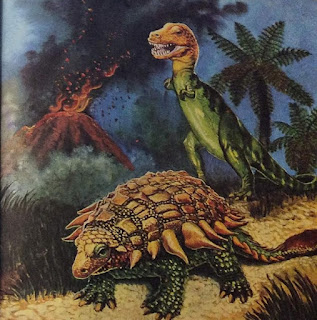Recently, I revisited the 13 episodes of the 1981 Filmation Saturday morning animated series, Blackstar. Jason and I watched an episode of Blackstar back in our Classic TV Flashback series. Watching most of the episodes, I feel like I came away with a good sense of the worldbuilding that was (or wasn't) being done to develop the planet Sagar as a fictional place. And I noticed some interesting details.
Sagar is a sparsely populated world. The few cities we tend to be small in area. There is no apparent surrounding farmland or outlying villages. Indeed, I don't think a village is seen in the series outside the arboreal home of the Trobbits. Sparsely populated worlds are common to animated and live action TV science fiction of the 60s to 80s, no doubt for budgetary reasons, but desolation is also a trait shared by Barsoom, the progenitor of literary Planetary Romance. Barsoom, of course, has the excuse of being a dying world and its city-states are presumably grander than what we see on Sagar. With the land of Gondar in episode 13 as perhaps an exception, you might think Sagar is inhabited by only a few thousand people, or even less.
This small population estimate is reinforced by the relatively inhospitable terrain of much of Sagar. We see a of rugged desert, broken by mountains and jungles, and a lot of very active volcanos. There are a lot of ferns and palms in evidence (in alien colors), and perhaps cycads. There is little evidence of grass, much less fields of grain. The Trobbits, the people we see most involved in food preparation, seem to live pretty much exclusively on the varied and fantastical fruit of the Sagar tree. Well, we do see them fishing in one episode, so there's that too.
 |
| Illustration from the Dinosaurs Little Golden Book |
These details: rugged terrain, sparse grass, and volcanism, really make Sagar resemble the depiction of ancient earth in dinosaur illustration of the midcentury. Combined with the number of large animals/monsters it projects the feeling of Sagar as a primitive or primeval world, a trait it shares with Filmation's portrayal of Mongo from Flash Gordon and the variously named world of The Herculoids.
Beyond these Planetary Romance or pulp science fiction elements, Sagar seems to borrow from fairytale fantasy. The show's recurrent opening features a scene of Blackstar and the Trobbits that is clearly an homage to Snow White (1937).
It doesn't end there though. Episode 7 reveals that winter (at least in the vicinity of the Sagar tree, but perhaps on the whole world) only ends when the Cloud Princess Lailana arrives to unlock the box that holds Springtime for the Trobbits. She is pursued on this mission by Creos, the Ice King, who has a flying fortress himself in a storm cloud, outfitted with technological equipment that appears to be made of ice. This is a fairytale like Baum's children's books or some of Jack Kirby's comic book flights of fancy: one that is updated to the technological conceits of its era. In fact, I think a not unreasonable elevator pitch description of Blackstar would be "John Carter of Oz."
With only 13 episodes and the budgets each episode must have had, Sagar isn't as developed as it's progenitor Mongo or it's descendant, Eternia. Still, it's broad strokes portrayal is a window into the conceits and influence that undergird these imagined worlds.





1 comment:
Man, I loved Blackstar as a kid...and could NOT stand "He-Man." which (to me) was a blatant rip-off of concept and a vehicle for toy sales.
(not that I didn't have a couple He-Man figures...which included rather cool comic books. But the TV show was awful)
"John Carter of Oz." That is a GREAT elevator pitch!
Post a Comment